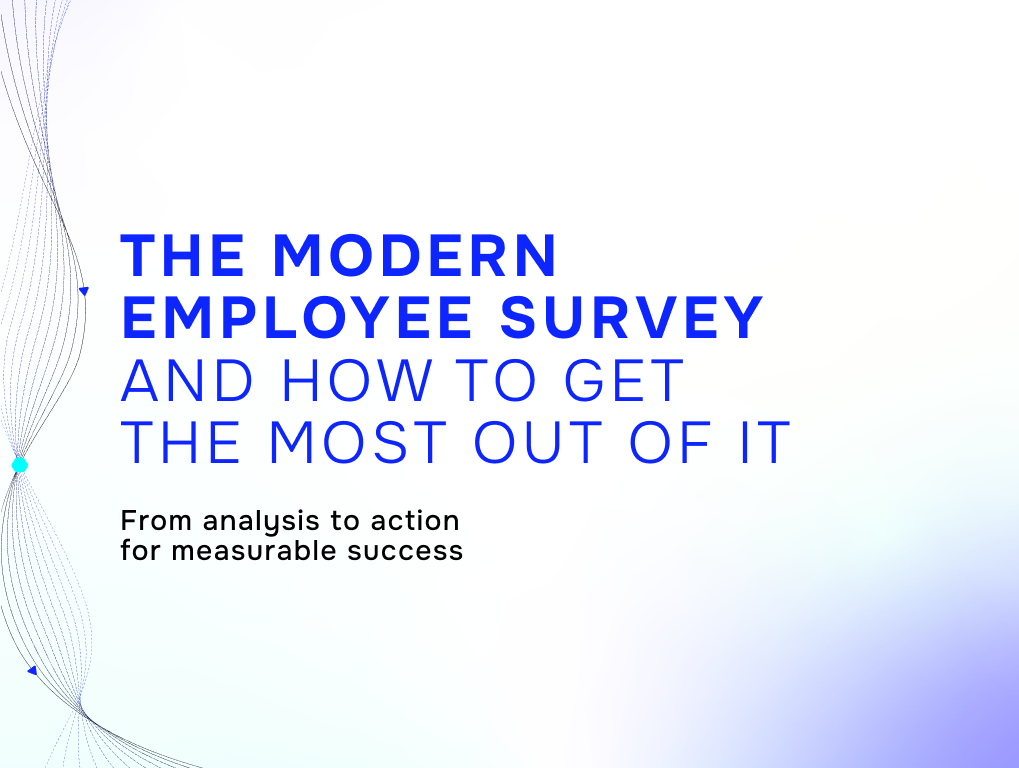We all know what it’s like: you get surveys in your e-mail inbox, requesting you to evaluate a service or your own employer. The questions and answers you can select are often the same. So, most people just sign off.
A low response rate is not only irritating. If the rate is too low, the responses are not particularly informative either. So how can we prevent a certain lethargy from the side of the user?
In traditional employee surveys, a response rate of 60 to 80 per cent is already considered very good. And it often happens that participants drop out during the survey – 70 to 90 percent of those who drop out do so on the first page, if they get there at all. On the one hand, it is important to avoid overloading the first page and, on the other hand, to offer a user journey that offers as few predetermined breaking points as possible. Most people think of single sign-on or modern survey solutions where the surveys can be answered directly in the email or on the smartphone, for example.
Advanced technology for more accurate survey results
Intelligent algorithms and artificial intelligence (AI) can help here. In atwork’s sophisticated database, there are always new questions stored that are asked during the survey. Accordingly, surprising follow-up questions also come up. Depending on what the respondents answer, the questionnaire is structured completely differently. Nevertheless, the survey results are comparable at the end and clear in their message.
With atwork’s intelligent software, which successfully measures and promotes employee engagement in companies, each survey is customised. For the Employee Engagement category alone, hundreds of scientifically based questions are stored in the software’s system. In addition, there are numerous other questions on topics such as employee life cycle and employee experience. Additional questions are also generated on an ongoing basis with the Zurich University of Applied Sciences. If employees criticise, follow-up questions follow so that one can learn from the criticism. The tool is also networked: it interacts between the topics and accesses the corresponding question catalogues of the different categories. In this way, the employee survey is never monotonous, but comes alive with constantly new content driven by the company.
It also depends on the industry: What works for engineers may not work for a financial institution. Therefore, the algorithm suggests different measures depending on the industry or employees. Generally, all tools are customer-specific and customizable.
Depending on how often a pulse check is conducted, the number of questions also varies. After all, a person who completes a survey monthly or weekly should be able to complete it more quickly than someone who only does it three times a year.
What comes after the survey results?
In order for employees to feel that they are being taken seriously, it is important that the survey results are processed quickly. However, very few companies succeed in making the results of employee surveys available to the participants immediately and then derive concrete measures. If employees do not hear anything for months after a survey, they are unlikely to participate in a future survey. It is recommended to give employees the opportunity to make answers “public”, i.e. to share the answer with their direct supervisor and at the same time to start a joint dialogue and exchange.
With atwork’s intelligent software, the survey results are of course available in real time. This ensures that participation rates remain high in future surveys and that the results remain clear and meaningful. AI comes into play when it comes to taking the user experience to the next level. Through machine learning, the system recognises preferences when anonymised employees respond to surveys. If, for example, the participation rate on Mondays and Fridays is significantly higher than on Wednesdays, and people generally participate in surveys more often in the morning than in the afternoon, the system always learns and adapts accordingly.


